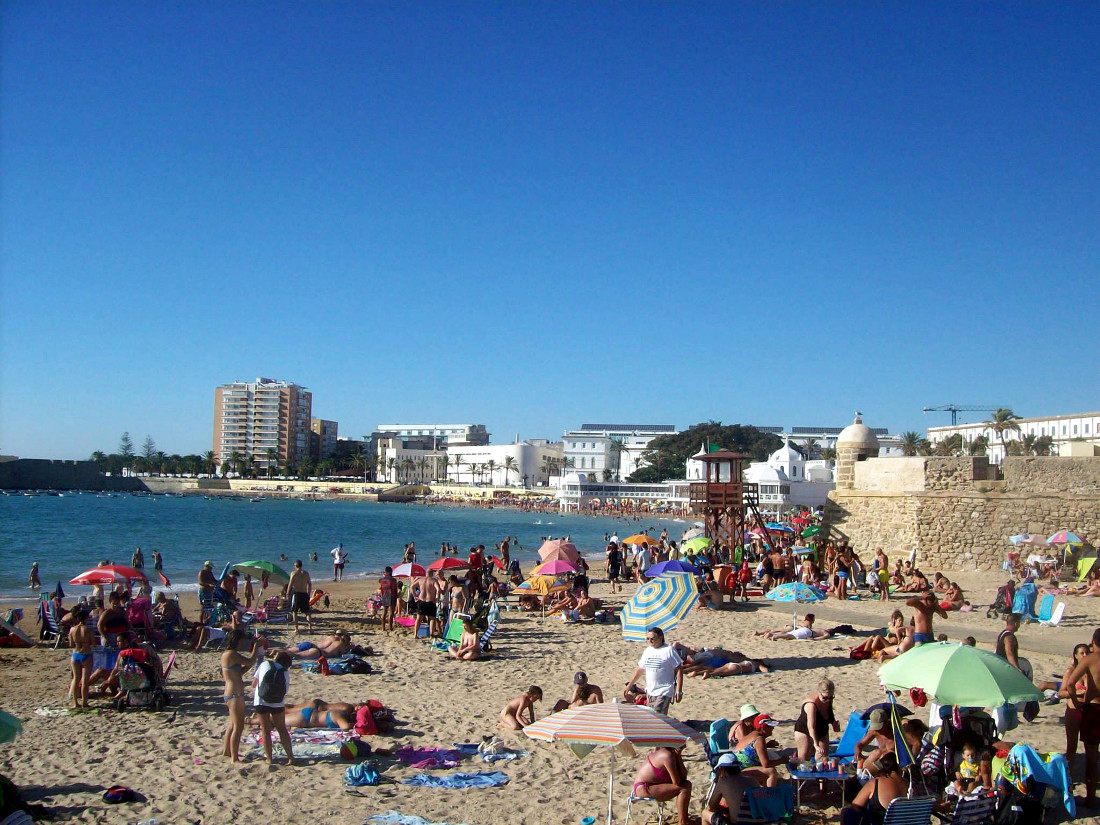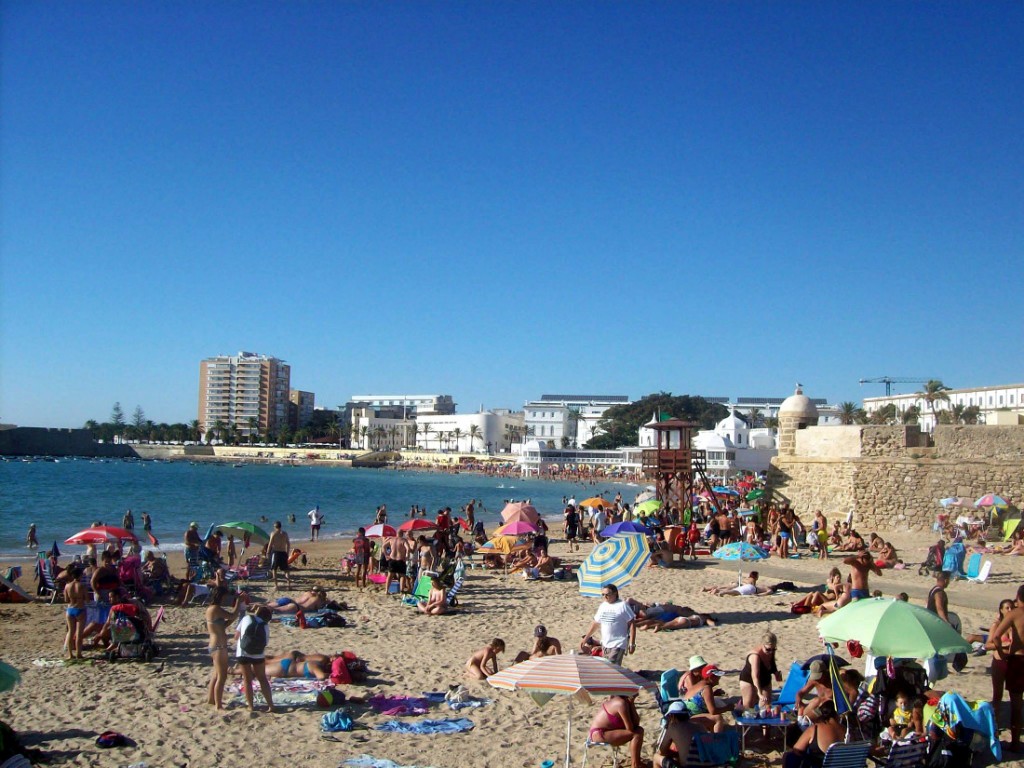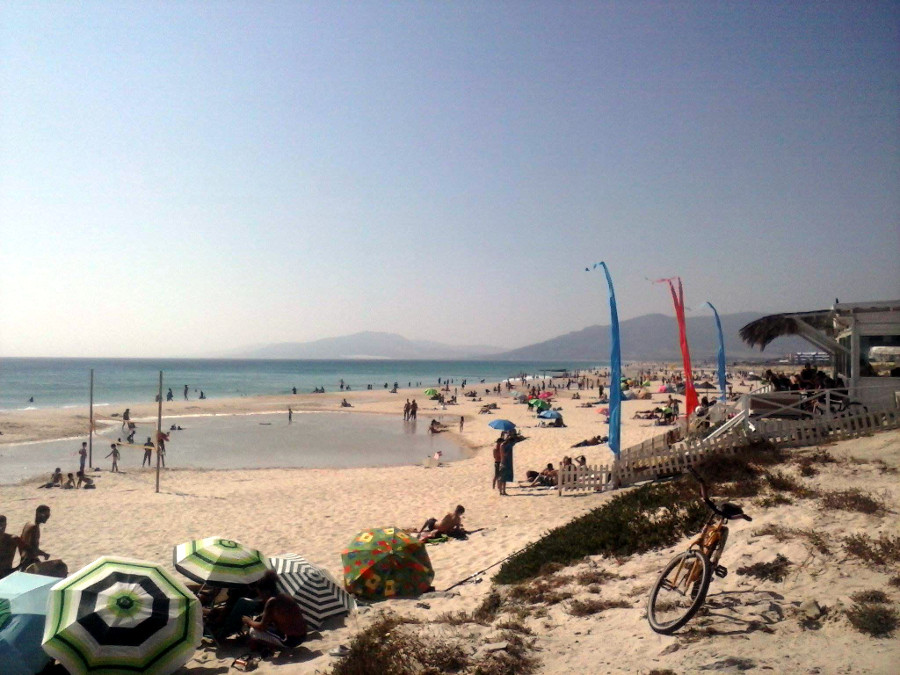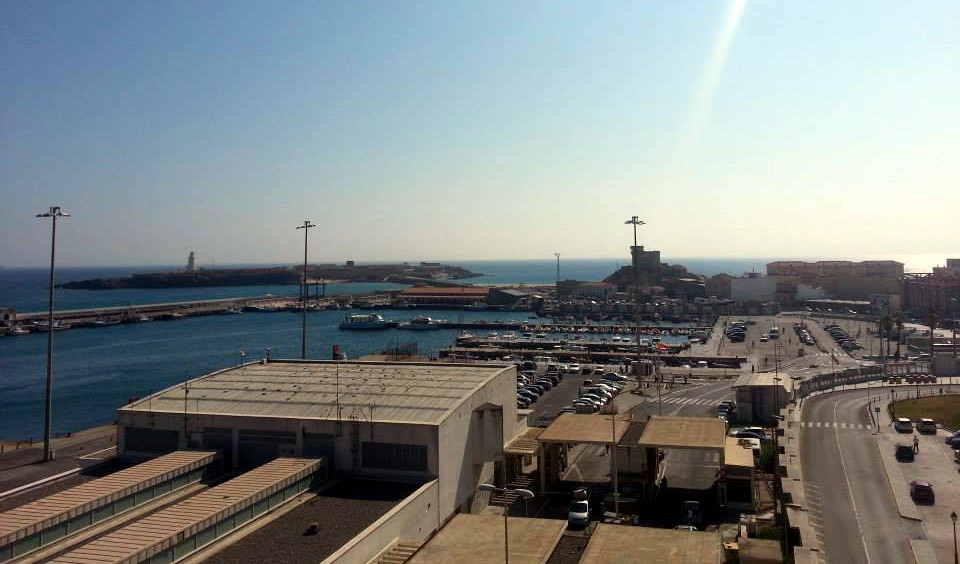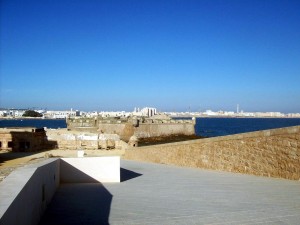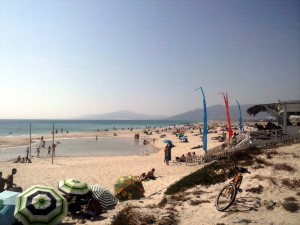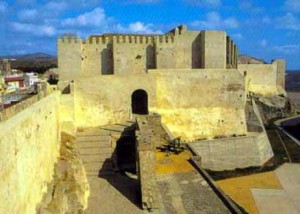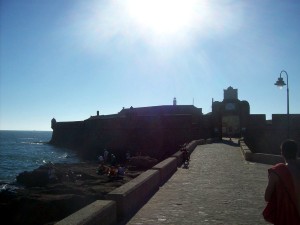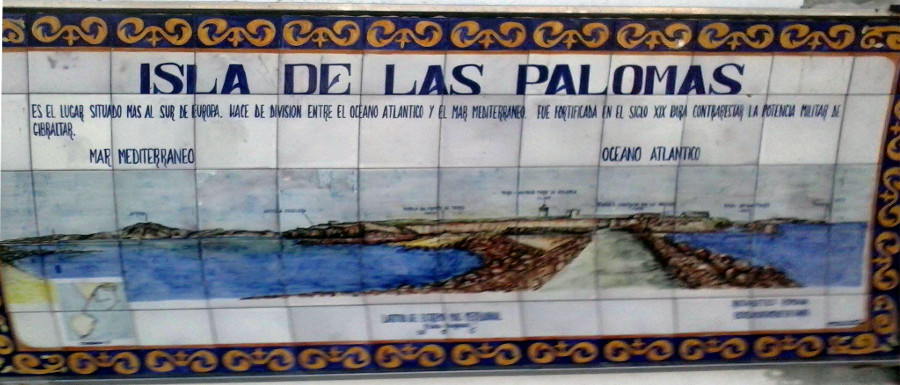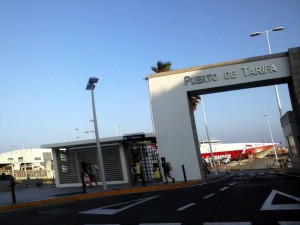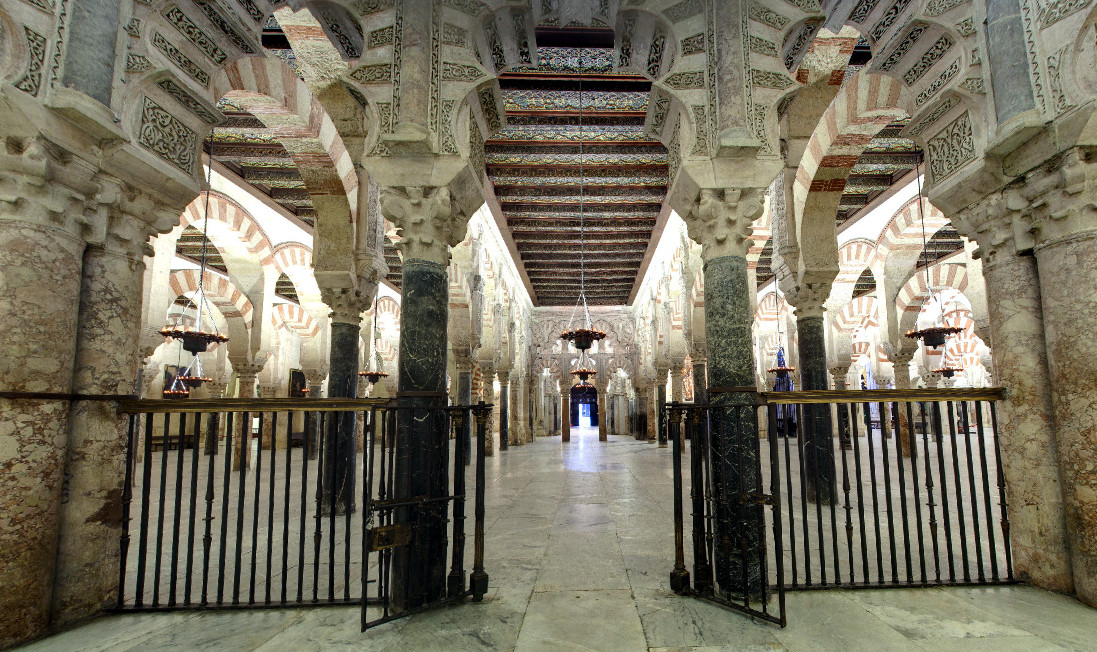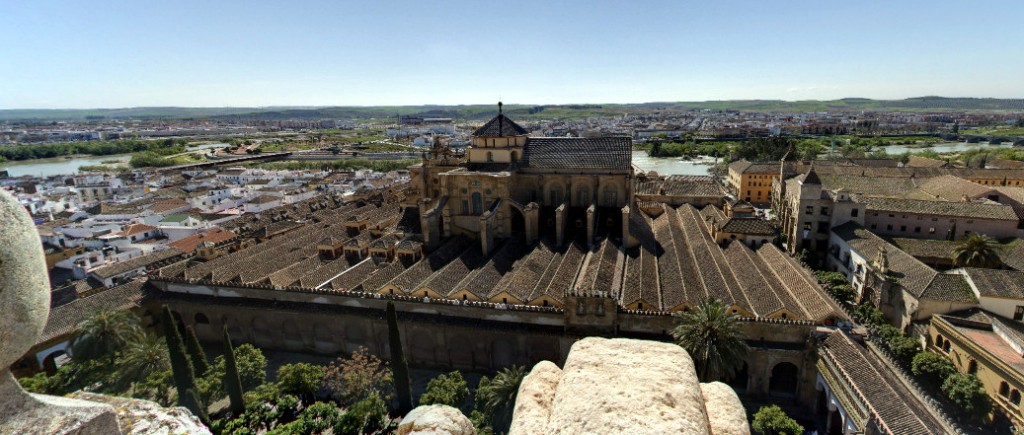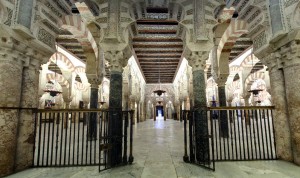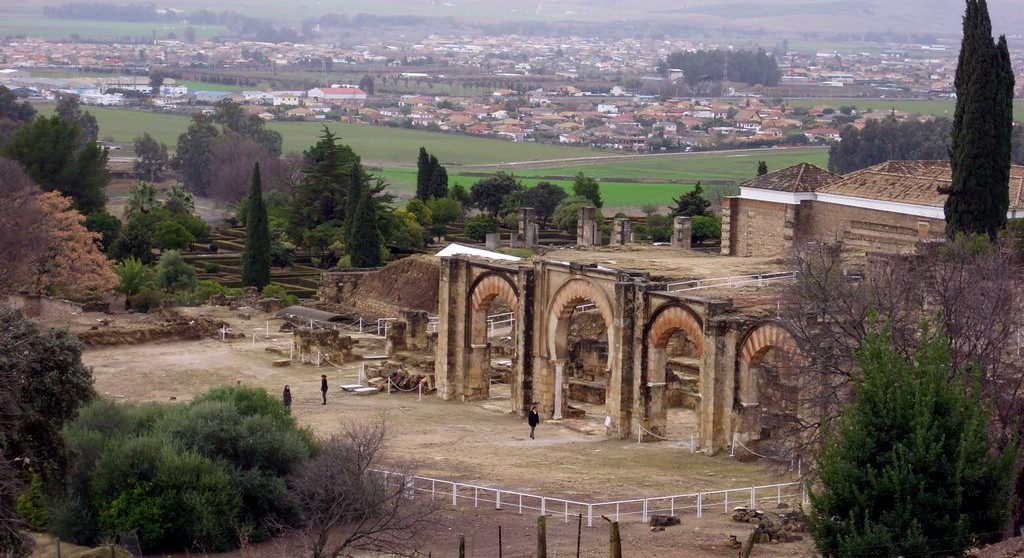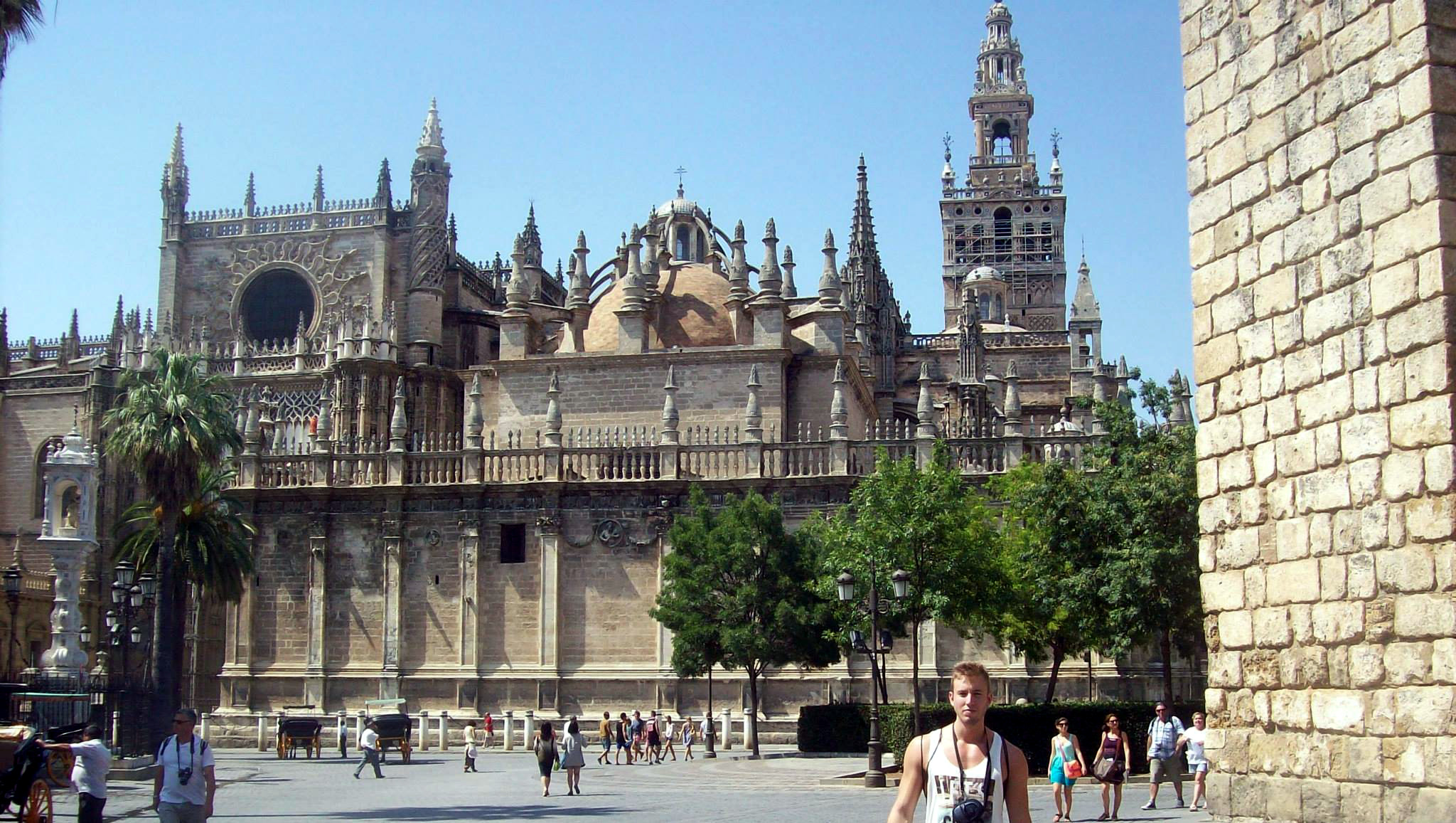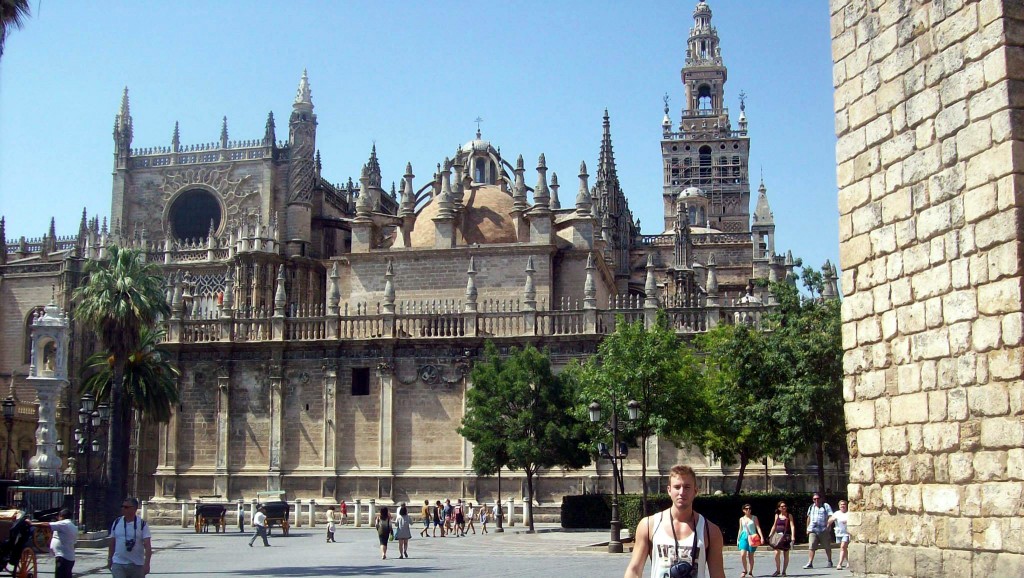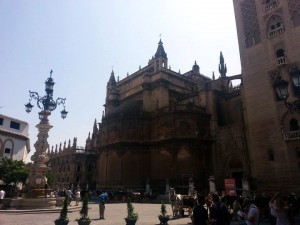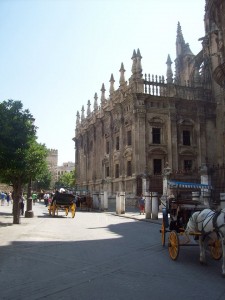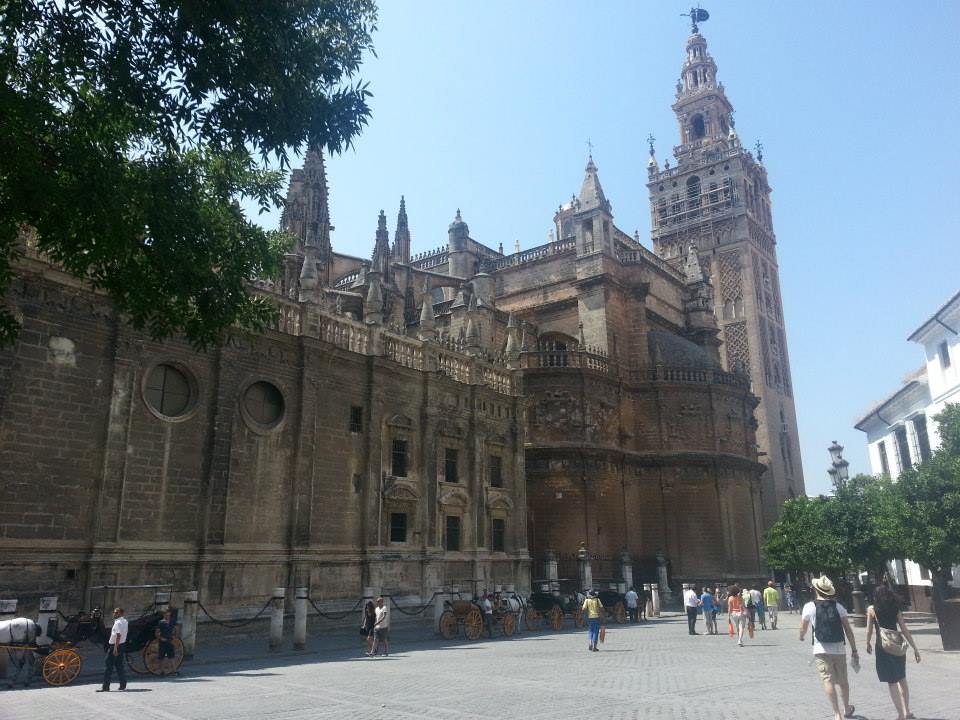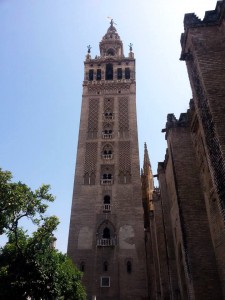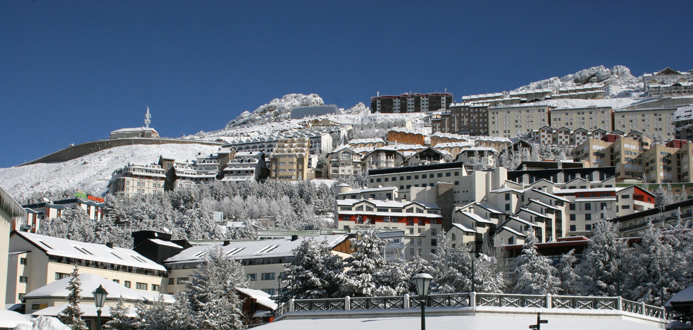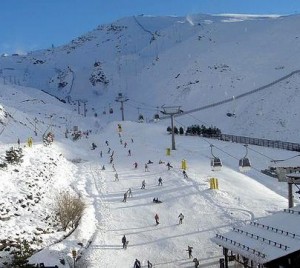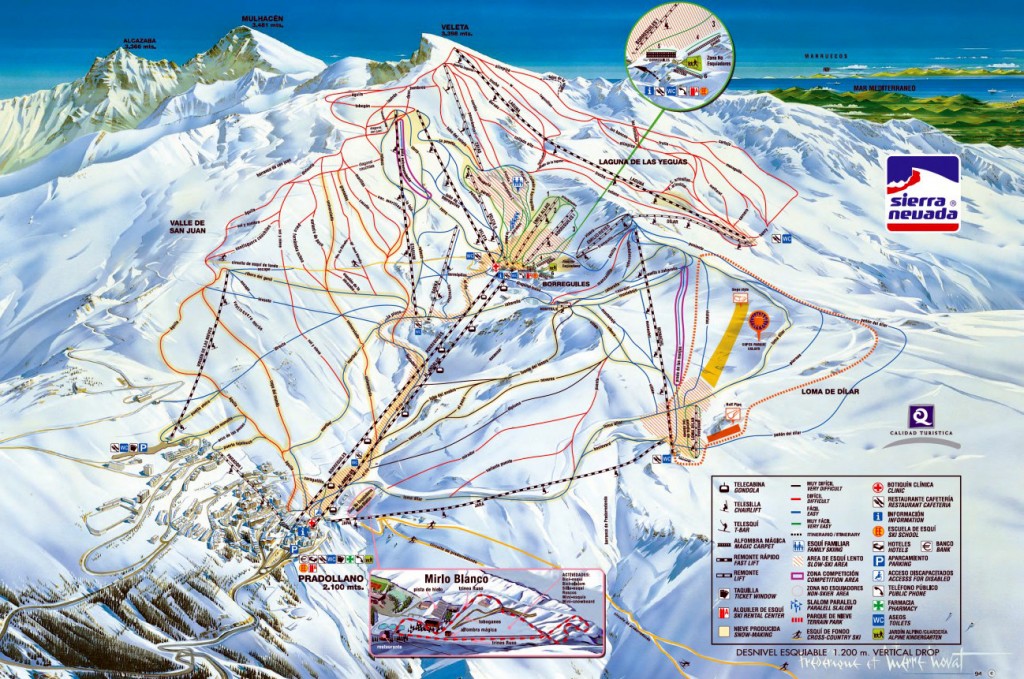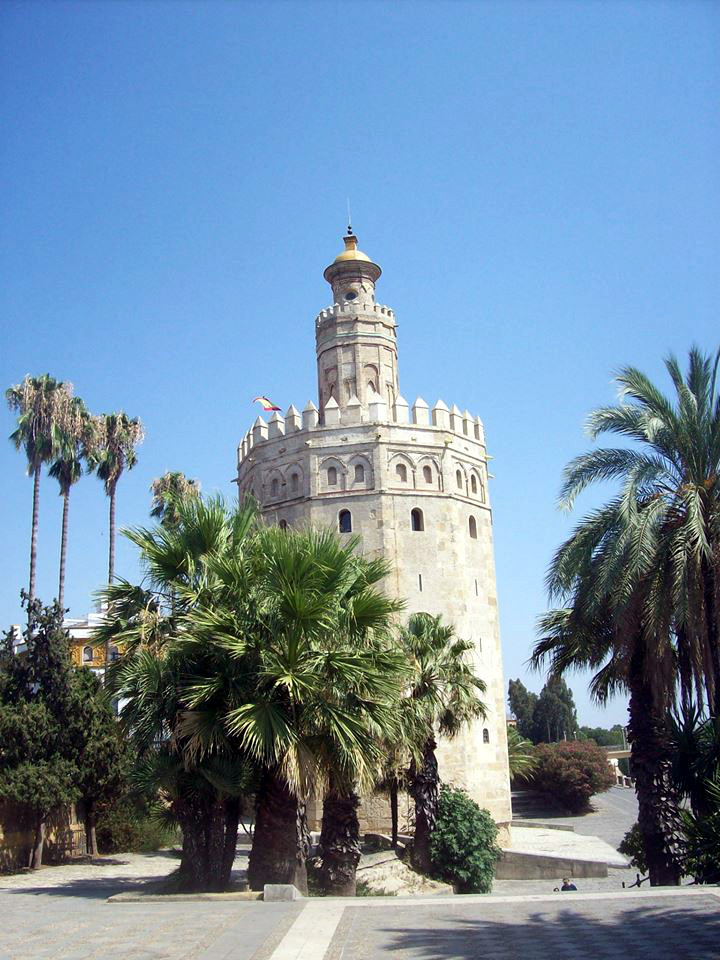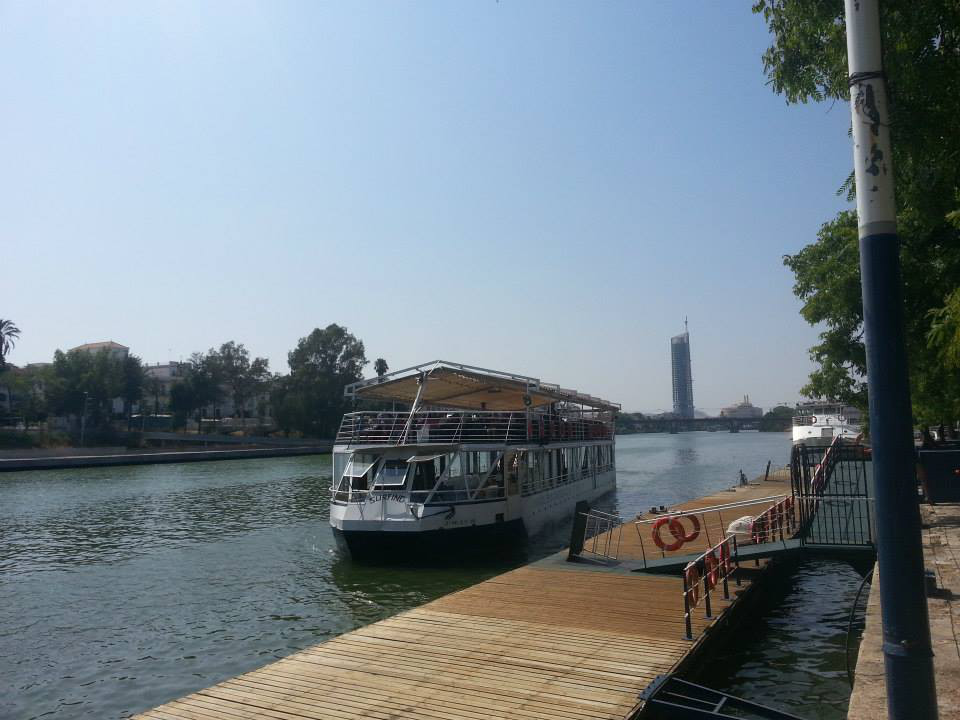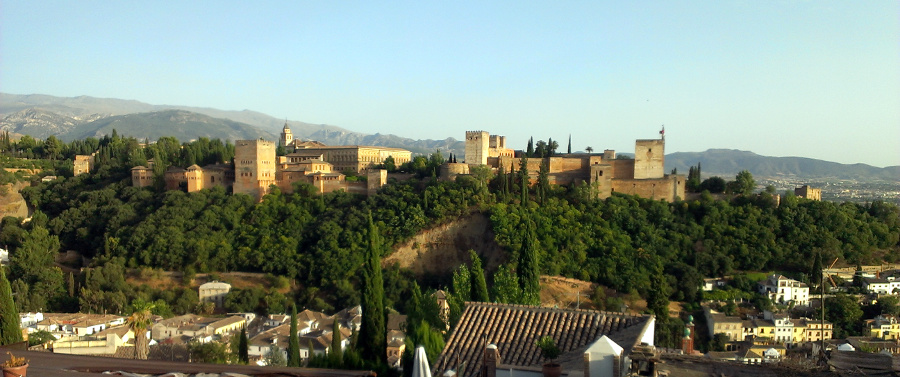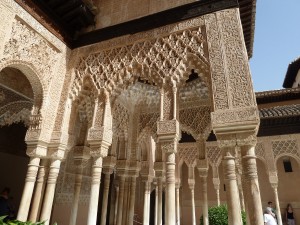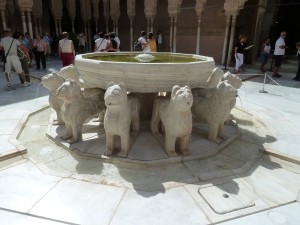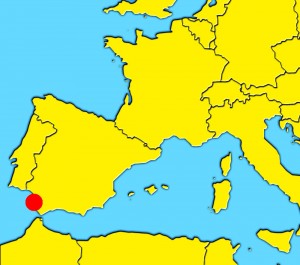 Situated on a small peninsula in the Andalusia region, on the southwest Spanish coast, Cádiz is bordered by the Atlantic Ocean and joined to the Iberian Peninsula (San Fernando town) by a long narrow isthmus. Its ideal geographical location, its mild, warm and sunny weather almost all year round, and its well preserved cultural and historical heritage make Cádiz an attractive tourist destination.
Situated on a small peninsula in the Andalusia region, on the southwest Spanish coast, Cádiz is bordered by the Atlantic Ocean and joined to the Iberian Peninsula (San Fernando town) by a long narrow isthmus. Its ideal geographical location, its mild, warm and sunny weather almost all year round, and its well preserved cultural and historical heritage make Cádiz an attractive tourist destination.
Cádiz is the oldest city in Spain, was founded 3,100 years ago by the Phoenicians (Fenicios) who named it Gadir and in the 3th century the Romans called it Gades, therefore, people who are born in Cádiz are called Gaditanos. Besides, when Phoenicians, Greeks, Romans, Visigoths and Muslims inhabited here they left an unmistakable cultural imprint on Cádiz which was conquered by the King of Castilla Alfonso X El Sabio ( 1221-1284) in 1262.
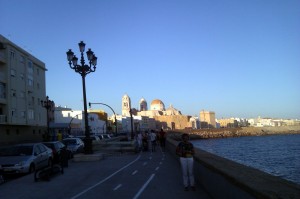 Nowadays, Cádiz and the Iberian Peninsula are linked by the isthmus, the Carranza Bridge, which was built between 1960 and 1970 of 1400 meters long, and the Puente de la Constitución de 1812 (Bridge of the Constitution of 1812) also called La Pepa Bridge that was built between 2007 and 2014. Being the longest bridge in Spain (1,655 meters in length over the sea), La Pepa Bridge was designed by the world renowned engineer Javier Manterola who was born in 1936 in Pamplona. It is said that the Drawbridge of the Constitution of 1812 is going to be the most emblematic construction of Cádiz. Both the Carranza and La Pepa bridges cross over the Bay of Cádiz from Puerto Real town to Cádiz.
Nowadays, Cádiz and the Iberian Peninsula are linked by the isthmus, the Carranza Bridge, which was built between 1960 and 1970 of 1400 meters long, and the Puente de la Constitución de 1812 (Bridge of the Constitution of 1812) also called La Pepa Bridge that was built between 2007 and 2014. Being the longest bridge in Spain (1,655 meters in length over the sea), La Pepa Bridge was designed by the world renowned engineer Javier Manterola who was born in 1936 in Pamplona. It is said that the Drawbridge of the Constitution of 1812 is going to be the most emblematic construction of Cádiz. Both the Carranza and La Pepa bridges cross over the Bay of Cádiz from Puerto Real town to Cádiz.
Cádiz, with a population of about 135,000, has a lot of to offer in the way of architecture, culture, gastronomy, entertainment, carnivals, flamenco, beaches, nightlife among others without forgetting its important seaport.
What to visit in Cádiz city
Firstly, we suggest taking a leisurely walk through its historical walled town (casco antiguo), enjoying its narrow streets, alleys and typical squares sensing the friendly atmosphere of the neighborhoods which still retain a lot of its traditional charm. Moreover, local people really have a lot of fun and open mind.
The Cathedral Square, one the most popular places in Cádiz, is in the medieval Pópulo quarter, which is really the oldest part of the city, visitors will be able to find the most remarkable buildings of Cádiz, such as the imposing Cathedral also known as New Cathedral in Baroque and neoclassical style that was built between 18th and 19th centuries and designed by Vicente Acero. Here is the tomb the world renowned musician Manuel de Falla. Besides, if visitors go up the Poniente Tower they will be able to enjoy a breathtaking view of the golden dome, the city and surroundings. It is worth a visit.
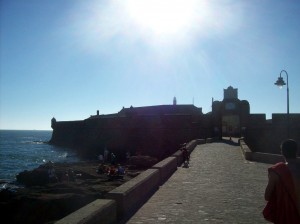 Following the walk from Cathedral Square people can go under the Arco de la Rosa (Rose Arch) from 13th century, it was a gateway to the walled town built by Alfonso X (1221-1284). This Pasaje de la Rosa ( Rose Passage) goes to San Martín Square, here are the Casa del Almirante with facade from 17th century in Baroque style, and the Church of the Carmen dating from 18th century in Baroque style inside a fine altarpiece from 18th century. If visitors take the Obispo Rances Street, they will arrive at The Fray Félix Square one of the most interesting spot.
Following the walk from Cathedral Square people can go under the Arco de la Rosa (Rose Arch) from 13th century, it was a gateway to the walled town built by Alfonso X (1221-1284). This Pasaje de la Rosa ( Rose Passage) goes to San Martín Square, here are the Casa del Almirante with facade from 17th century in Baroque style, and the Church of the Carmen dating from 18th century in Baroque style inside a fine altarpiece from 18th century. If visitors take the Obispo Rances Street, they will arrive at The Fray Félix Square one of the most interesting spot.
Santa Cruz Church, (also known as the Old Cathedral) was finished its construction in the early 17th century by Cristobal de Rojas in Renaissance style. Being the first Cathedral of Cádiz until 1838, Santa Cruz Church was built on the site of a previous church destroyed in the late 16th century, which had been built on the site of a mosque. Inside Santa Cruz Church its main altarpiece, the Genoveses Chapel and the Urn and the Christ of Holy are worthy of mention. The Sagrario Tower and the Cathedral Museum next to Santa Cruz Church are also must see places.
Casa del Obispo ( Bishop’s Palace) between the New Cathedral and the Fray Felix Square ( Santa Cruz Church ) is the most important archaeological remains of the city ( Phoenicians, Romans and medievals) can still been seen in this palace.
Teatro Romano (the Roman Theater) was built in the late first century before of Christ being the largest Roman Theater in Spain. It was discovered in 1980 by chance. It is next to Santa Cruz Church too.
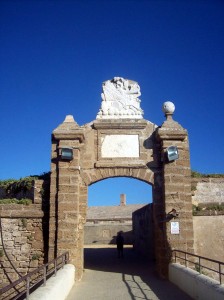 Other interesting places in this quarter of Pópulo are: The Arco del Pópulo (Pópulo Arch) from 13th century was other gateway of the walled city built by Alfonso X (in Fabio Rufino Street). Arco de los Blancos (White Arch) of four Arches was part of a medieval castle and other gateway from 13th century. It is in San Juan de Dios Street next to the Roman Theater .
Other interesting places in this quarter of Pópulo are: The Arco del Pópulo (Pópulo Arch) from 13th century was other gateway of the walled city built by Alfonso X (in Fabio Rufino Street). Arco de los Blancos (White Arch) of four Arches was part of a medieval castle and other gateway from 13th century. It is in San Juan de Dios Street next to the Roman Theater .
If tourists visit the Pópulo neighborhood they will be able to enjoy its shops, cafés, taverns, traditional dishes, delicious tapas and wines spending their free time sitting in its open air terraces because the weather in Cádiz is usually excellent.
By the way, the promenade goes around the old town so the Cathedral, Casa del Obispo, Santa Cruz Church, Roman Theater and other places can also be reached by Campo del Sur Avenue (Paseo Maritimo).
It is said that flamenco song was born of the people of Santa María neighborhood, so the music roots come alive in its streets. If people want to know more about flamenco, they will probably have a first contact with Flamenco in this neighborhood.
Puertas de Tierras one of the most emblematic monument of Cádiz separates the Old walled Town from the modern Cádiz city.
The Town Hall building, which was built in the early 19th century in neoclassical style, has a beautiful facade and is located in the lively San Juan de Dios Square one meeting point in the heart of Cádiz.
Museo del Vinos y Toros de Cádiz (Wines and Bulls Museum) is an exhibition about wines and bulls in where visitors can taste the delicious wine from Cádiz and know more about the traditional bullfights ( a spectacle in which a man fights and kill a bull).
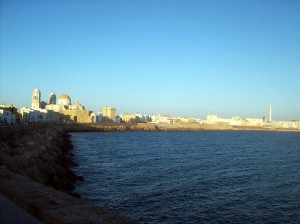 In middle of the Spain Square people can find the magnificent Monument to the Constitution of 1812 which was raised in 1912, and other interesting buildings such as the Customs and the House of the Four Towers. Do not miss out on the port and pier on the Cádiz Bay nearby.
In middle of the Spain Square people can find the magnificent Monument to the Constitution of 1812 which was raised in 1912, and other interesting buildings such as the Customs and the House of the Four Towers. Do not miss out on the port and pier on the Cádiz Bay nearby.
Oratorio de la Santa Cueva, which consists in two outstanding chapels, is considered to be a masterpiece of the neoclassical Gaditano, decorating with paintings by Francisco de Goya, Zacarias Gónzalez and others world renowned arts.
People interested in art should visit the Cádiz Museum where they not only will find paintings by Zurbarán, Murillo, Rubens, Alonso Cano among others but also archaeology, art and history. Is is in La Mina Square.
Alameda Apodaca is a popular area with plenty of trees, benches, fountains and gardens an ideal area to walk and rest, above all in summer. It is in the north of the city near the Candelaria Bastion from 17th century and the Cádiz Museum.
Genovés Park is the most beautiful and important green area in Cádiz, plenty of plants, trees, fountains, gardens benches is a real botanic park where people can enjoy walking along its avenues and squares. It is situated in the old town between Santa Catalina Castle and Candelaria Bastion and near the Caleta beach.
Grant Falla Theater was built between 1884 and 1905 on the site of the previous theater brunt in neomúdejar style. It is worth a visit and near Genovés Park.
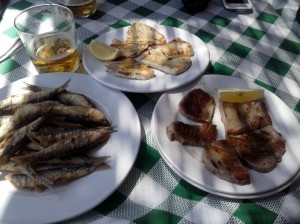 The lively Viña quarter is certainly popular not only among Cádiz residents, but also with tourists elsewhere in Spain and other countries, with plenty of typical bars, cafés, restaurant where serve traditional dishes, tasty cook fish and delicious wine. The Santa María Square is a typical meeting point in the heart of this neighborhood which comes alive with citizens and tourists dancing and signing during the Carnivals.
The lively Viña quarter is certainly popular not only among Cádiz residents, but also with tourists elsewhere in Spain and other countries, with plenty of typical bars, cafés, restaurant where serve traditional dishes, tasty cook fish and delicious wine. The Santa María Square is a typical meeting point in the heart of this neighborhood which comes alive with citizens and tourists dancing and signing during the Carnivals.
San Sebatian Castle dates from 19th century is a fortress on a small islet in La Caleta washed by the sea. Inside there is the lighthouse set up in the early 20th century, it measures more than 40 meters in length.
The coastal Castillo de Santa Catalina was constructed in the 17th century is a fortress by La Caleta beach.
Other interesting place is the Hospital de Mujeres (Women Hospital) in gaditano Baroque style and its chapel where there is one noteworthy painting by El Greco. It is near Oratorio San Felipe.
Oratorio San Felipe Neri (Saint Felipe Neri Church) in Baroque style has a Baroque altarpiece dating in the mid 18th century with a beautiful painting by Murillo, next to this Church is the Museo de las Cortes de Cádiz (Cortes of Cádiz Museum ) about Cádiz Constitution.
The watch Tavira Tower from 18th century is one of the most visited places in Cádiz, it has the Camera Obscure that allow visitors to watch the city and the terrace from where people can also see a spectacular views of Cadiz. It is near the Oratorio
Plaza de Abastos (Abasto Square) is a traditional Gaditano market, although most tourists come here to taste its typical tapas and wine in the bars nearby and have a look around the Flowers Square the main shopping area.
Beaches in Cádiz city- Costa de la Luz (Coast of the Light)
Obviously Cádiz has many beautiful and sunny beaches most of them are formed by fine golden sand dunes its clear blue water attracts tourists and citizens who enjoy its excellent weather.
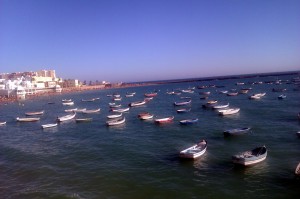 – La Caleta beach of fine and golden sand is the most popular beach in Cádiz because it has bars, restaurants, excellent facilities even flamenco club and is situated between San Sebastian and Santa Catalina Castles in the old historical town so it is often plenty of tourists and local people.
– La Caleta beach of fine and golden sand is the most popular beach in Cádiz because it has bars, restaurants, excellent facilities even flamenco club and is situated between San Sebastian and Santa Catalina Castles in the old historical town so it is often plenty of tourists and local people.
– Santa María del Mar beach of golden sand is the smallest beach of Cádiz. Situated next to La Victoria beach is often crowded.
– La Victoria beach stretches for more than 2,900 meters. It is by the promenade in the modern area of Cadiz. Having excellent facilities La Victoria is usually plenty of people of all ages.
– The Cortadura beach of fine golden sand dunes is located in the isthmus between Cádiz and San Fernando town. It is easy to get on foot and measures about 2,500 meters in length, secluded but plenty of free space.
– El Chato or Torregorda beach is located between the Cortadura and the Composto beaches it is similar to the Cortadura beach but more than 2,600 meters long.
Cádiz has more beaches, other interesting places, a lot of fun, tasty food. good wine, a very pleasant weather, lively nightlife, dancing and flamenco and so on.
More cities and towns to visit near Cadiz
– Tarifa: The most southerly town of Spain.
– Andalucia / Andalusia region: Read here all about this region, including cities as Grandada, Cordoba or Sevilla.
